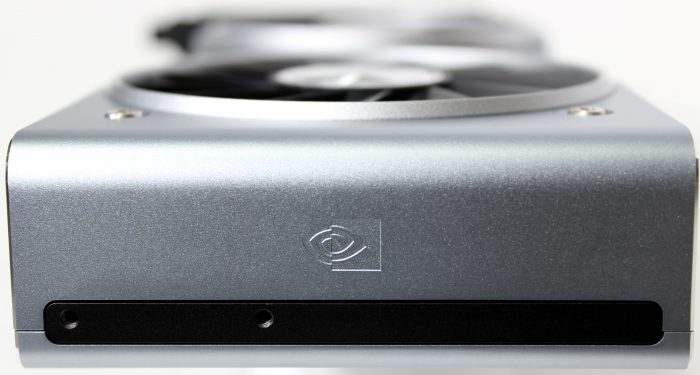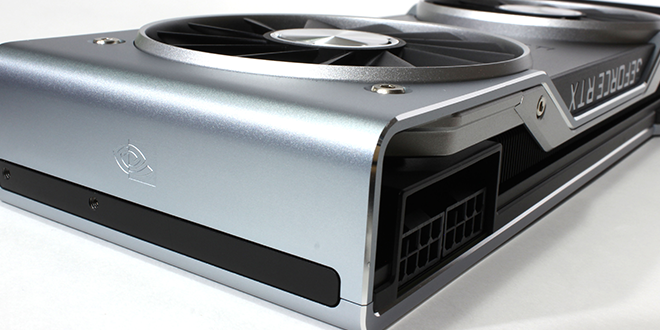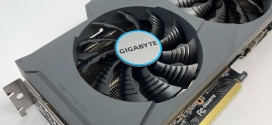Final Thoughts
Now comes the hard part. How do you close something that’s not just another GPU review but the launch of something that could potentially change the way GPUs render games for the foreseeable future and who knows what else the new tech can be used for as more use cases are developed.
I knew going into this that the Turing cards were built for 4K, it said so in the reviewer documentation, it was said on emails and talks with Nvidia reps. So if anyone wants to get upset because they won’t see gains on their 1080P display, I can understand but I’m not really gonna count this against the RTX cards as 4K monitors can now be had for such prices that they are easily accessible to the masses.
One thing to note in regards to the low-resolution performance is CPU bottlenecking, It has been a very long time since I could say I have seen a GPU hampered by a platform but the time has come again, so with that I hope the new chipsets/CPUs can push through the current wall they are hitting to give us better overall platform efficiency as GPUs are throttling up at breakneck pace and unfortunately CPU/platforms are showing fewer gains per generation. This is why we are starting to see performance walls at lower resolutions like 1080p and even 1440p.
The new GPU boost design is awesome and gives you so much more control over your cards. Add to this the new OC Scanner which is highly intelligent and capable and you have a recipe for a simple overclock that will rival what you may have spent hours chasing previously. Especially if you were really pushing for an edge overclock.
The VRM and PCB design on these cards is damn good and built as stout as I would expect on a high-end partner design.
The new cooling solution not only keeps the card cool but quiet as well and looks pretty awesome.
Now comes the big question, do I recommend you buy one? Well, that’s a pretty simple one after going through everything we have in the preceding pages.
Value, Well that’s still a rough one and some may crucify me for saying this but I feel with the performance and the performance potential, yes it is justified as the 2080 Ti is placed in a price point which matches the normal spend for a system build which would be spec’d as so running 4K+. and add to this that as an example if you buy two 1080 Ti’s right now, you have to hope multi GPU is supported in what you play to match or even slightly beat a single 2080 Ti at a similar or higher investment.
The 2080 comes in at what a 1080 Ti sells for new and that of course again raises questions but when you look at a 1440p/4K based gaming build, it really is not too far out of the ballpark and as RTX features and DLSS become more prevalent you will be secure in the performance potential as games will only get more demanding. As you observed with us in our benchmark testing, most all newer games saw the RTX cards pull ahead of the existing Pascal tech and this is on an early driver which will likely be optimized as time marches on.
If you are looking at going 4K+ or have a 4K+ display already, then yes for sure. If you are going HDR, definitely.
If you have a 1080p display and don’t plan on upgrading any time soon, I would maybe hold off as I bet NVIDIA will have something coming down the pipe that will better fit your application before you know it. But the performance simply won’t be there for you.
I have no choice but to Give Nvidia and the RTX series cards a gold on this one. There are simply too many new and cool things Nvidia has done and is doing with these cards to ignore. They are in essence changing the way your PC will render gameplay and with that, you will get even better performance as the game’s release or get patched for it. Hats off to the Nvidia team on this as I am quite sure nobody saw a feature set like this and a GPU this substantial coming just mere months ago.

| Pros | Cons |
|
|
 Bjorn3D.com Bjorn3d.com – Satisfying Your Daily Tech Cravings Since 1996
Bjorn3D.com Bjorn3d.com – Satisfying Your Daily Tech Cravings Since 1996










Two years later a new generation card should deliver around the performance the 2080ti does however the price is also expected to stay equal or less than the card it replaces. This is where the 2080ti fails big time and it’s sad to see reviewers ignore the fact. All serious reviewers should ignore nvidia marketing and compare the cards to similarly priced previous gen cards. So 1080 to 2060, 1080 to 2070 and 1080ti to 2080.
I agree, if this was a direct comparison as in Rasterization to Rasterization that would be 100% true and this review would be much different. However, as in life, things are much different and it has nothing to do with Nvidia’s marketing but more to do with having a long view on the direction of the industry. There is a lot at work which will come around as this all matures and new features really get to be explored. Thank you for the comment and for giving it a read as I always welcome constructive feedback. That being said, I would definitely revisit not just my review but others as the new features change the way you can render in-game scenes and opens the doors to next level performance differences along with massively more immersion with what the new real-time ray tracing capabilities start to show up.
I do agree that the new tech will change how rendering is done, in a GPU generation or two as it is the right way forward. But the 2080 and 2080ti cards simply do not currently deliver the value for anyone but developers that need to work on this for 1-3 years before it hits the market for real.
A card should be reviewed from a ‘consumer’ perspective. The consumer here being the gamer not a developer. Any existing consumer with a 1080ti looking to upgrade would be considering to spend around the same as amount for a new card. So his upgrade here is the 2080.. The 2080 does not currently provide the usual generational performance increase and is therefore close to worthless as a upgrade. If the consumer was willing to spend $1200 his existing card would most likely be a Titan X.
So from this perspective the 2080 upgrade is turing and rtx cores and they are not supported in DX12 yet (with luck it comes in October), furthermore there are no games currently available.
So all in all you are buying something that might work but most indications point to RTX forcing you to go from 4k -> 1080p on a 2080TI and the 2080 will probably not do well at all. This leaves DLSS as the only real gain.
Now if NVIDIA has launched this without marketing bullshit trying to sell a titan as a TI I would have no issues because people know what they are buying and all reviews would be done correctly comparing apples to apples instead of apples to oranges.
So the conclusion for now is that the 2080 card probably only provides DLSS as a improvement over a TI for a higher price as the RTX cores most likely wont be able to render in a usable resolution for guys doing 4k or 144hz gaming .
Furthermore I would expect the 2080 FE (factory overclocked card) to be compared to a equally overclocked 1080 TI.
Any conclusion that skips these obvious issues are hard to take serious.
Very well said Reviewers are missing this very important point: nvidia is ripping us off with this outrageous prices
This is not true, as in any market the tech will go for what the market will bear. If you are not happy with the prices, you have no requirement to make a purchase or even buy when a model which meets your expectations show up. I have no skin in this game as far as what Nvidia sells their product for, of course as a consumer I would love to see it for 500 or even 99 bucks but the amount of research and time that goes into these products it is simply not feasible.
Same goes for any tech product… Try telling Tesla their products (cars) are overpriced.. Many feel that way and they choose not to purchase them, but knowing what I know about them, same as I know about this tech I would buy one if I could… today…
IF this were true I would definitely agree. but we have seen games which are in process of adding these features now.. many games which already exist and more are gonna be added to this list soon I am sure. I would definitely agree once again if this was some far off tech, but it’s simply not. This is tech we will see implemented within the next few quarters is what I am seeing.